Unbound bike test: we pitted the Classified hub against some of the toughest conditions out there, and this is what happened
The build included a last-minute tire swap, the Classified Powershift system, a dampening seatpost and gravel specific tape.
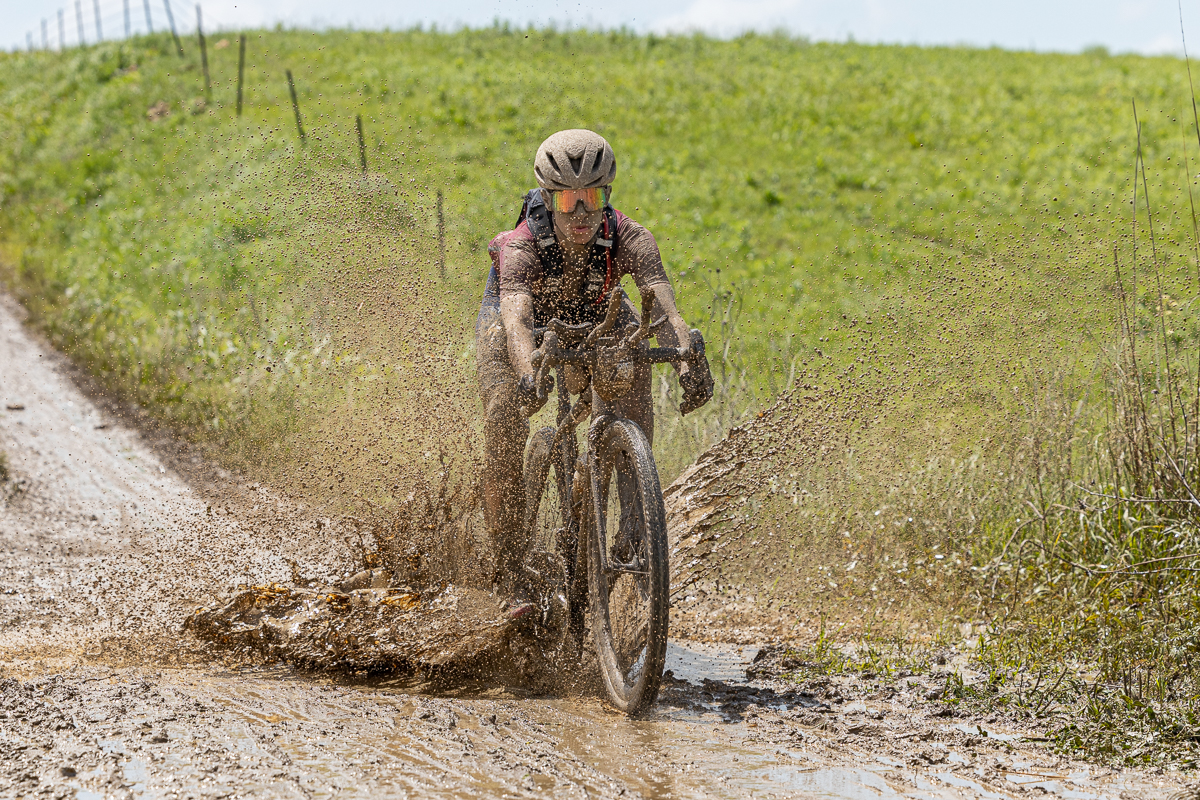
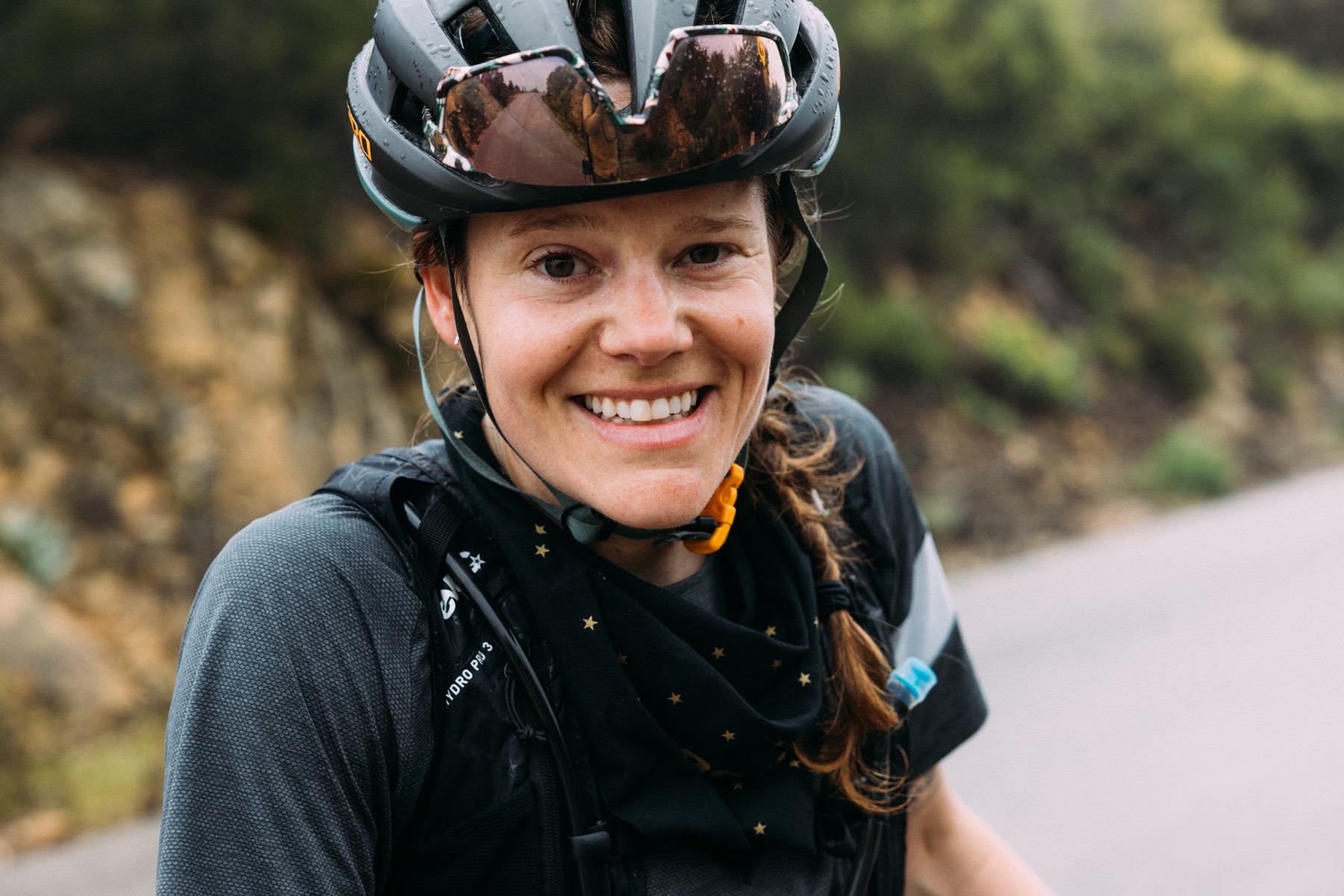
When I was given the opportunity to report on the world's premier gravel race, Unbound Gravel, I was keen to figure out a way in which I could also experience some of the famous Flint Hills riding myself.
For those not familiar with Unbound or why there is such a buzz around it, in the 15 years it's been held, Unbound Gravel has grown to be the biggest and most competitive mass-start gravel event in the world.
It takes place in and around Emporia, Kansas, in the middle of the United States. And with 4,000 registered riders from 44 countries competing in six race distances —including past and current WorldTour roadies like Peter Sagan and Laurens ten Dam, professional triathletes, mountain bike Olympians such as Lea Davison, gravel privateers, and even elite rowers— Unbound draws a uniquely diverse and world-class field of professional athletes.
Whether you’re partaking in the 50-miler or the 350-miler, Unbound is a test of endurance, self-sufficiency and equipment. All race distances require the riders to be completely self-sufficient and riders might be out on course for as long as 35 hours in one go.
In addition to needing to fuel oneself for some very long hours in the saddle, you're on your own when it comes to repairing mechanicals or fixing flat tires. The latter is a big part of the race as the sharp flint rocks are notorious for slicing tires and dashing podium, or even finishing, aspirations. Along the way, riders also need to contend with the undulating terrain, exposed roads, headwinds and, if at all wet, tire- and soul-sucking mud.
Being on deck to interview the race winners of the marquee 200-mile race, I decided to jump into the 100-mile event myself. The 200-miler started an hour ahead of the 100-mile race, and I figured that even if I took some photos and did some interviewing along the way, I would have enough time to make it to the finish, clean up and be ready to get to work.
But weather had been a big concern in the lead-up to race day with a fair bit of rain in the days prior as well as thunderstorms and downpours predicted on race day itself. Tire choice, tire clearance and tire pressure seemed to be all people were talking about. Additionally, the mud can destroy groupsets and grind you to a halt. It became such a buzz that paint sticks were being handed out to help clear the mud off the bikes.
Get The Leadout Newsletter
The latest race content, interviews, features, reviews and expert buying guides, direct to your inbox!
I'll admit that I did get a tad nervous hearing several horror stories about folks getting stuck on course for hours on end with flat tires or other mechanicals — I was on a timeline after all. And so, naturally, I started tinkering with my bike setup.
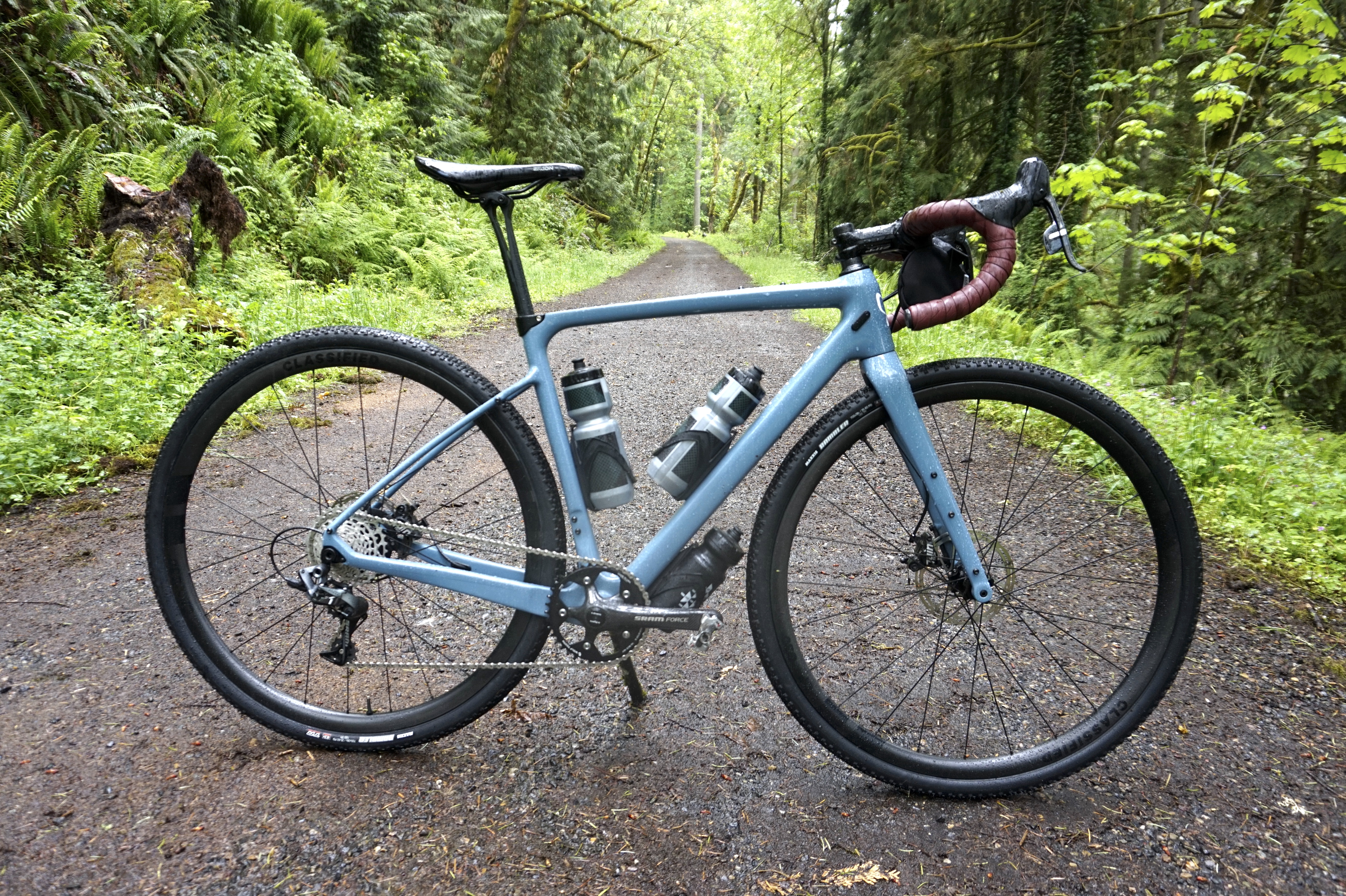
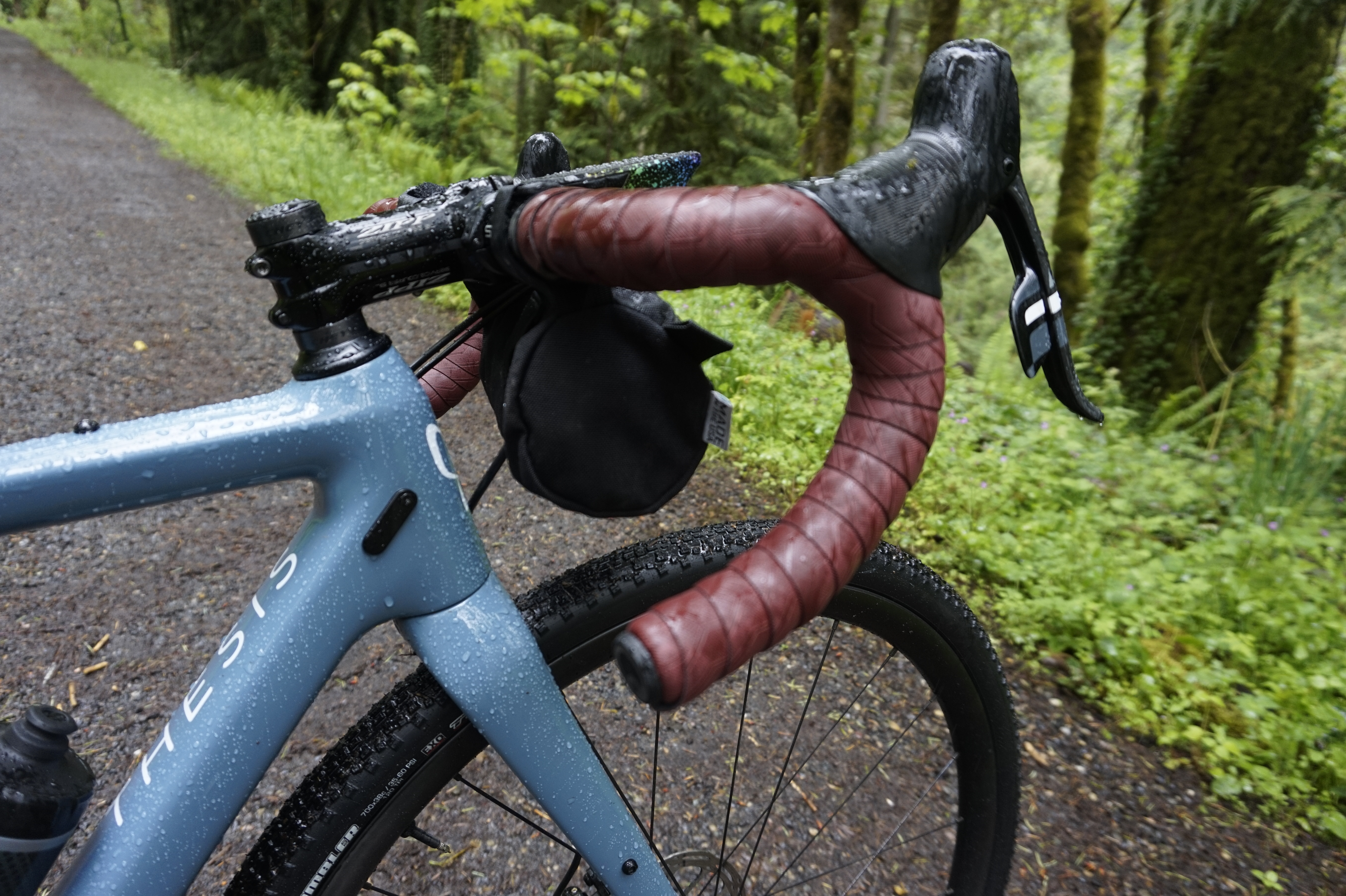
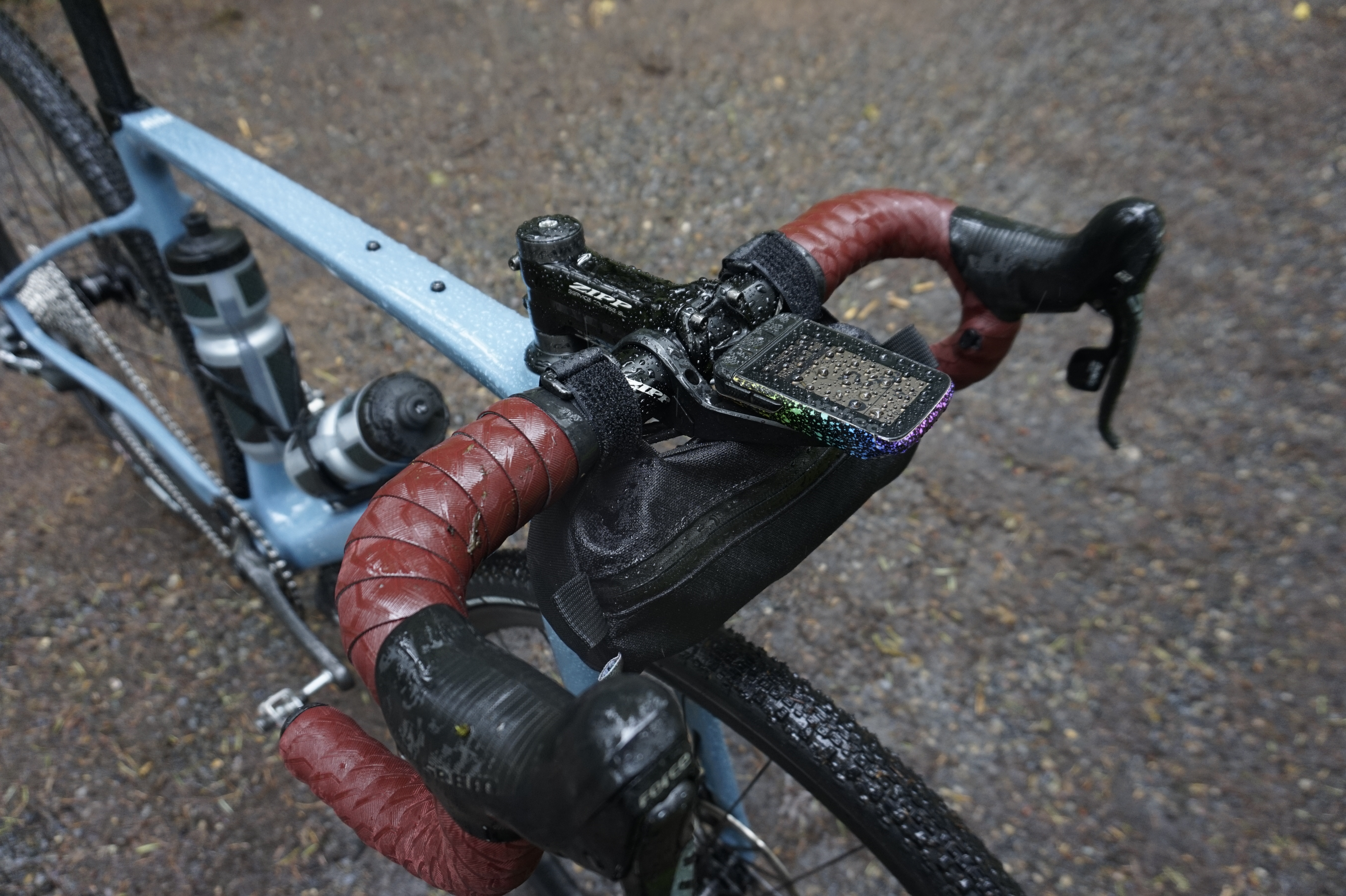
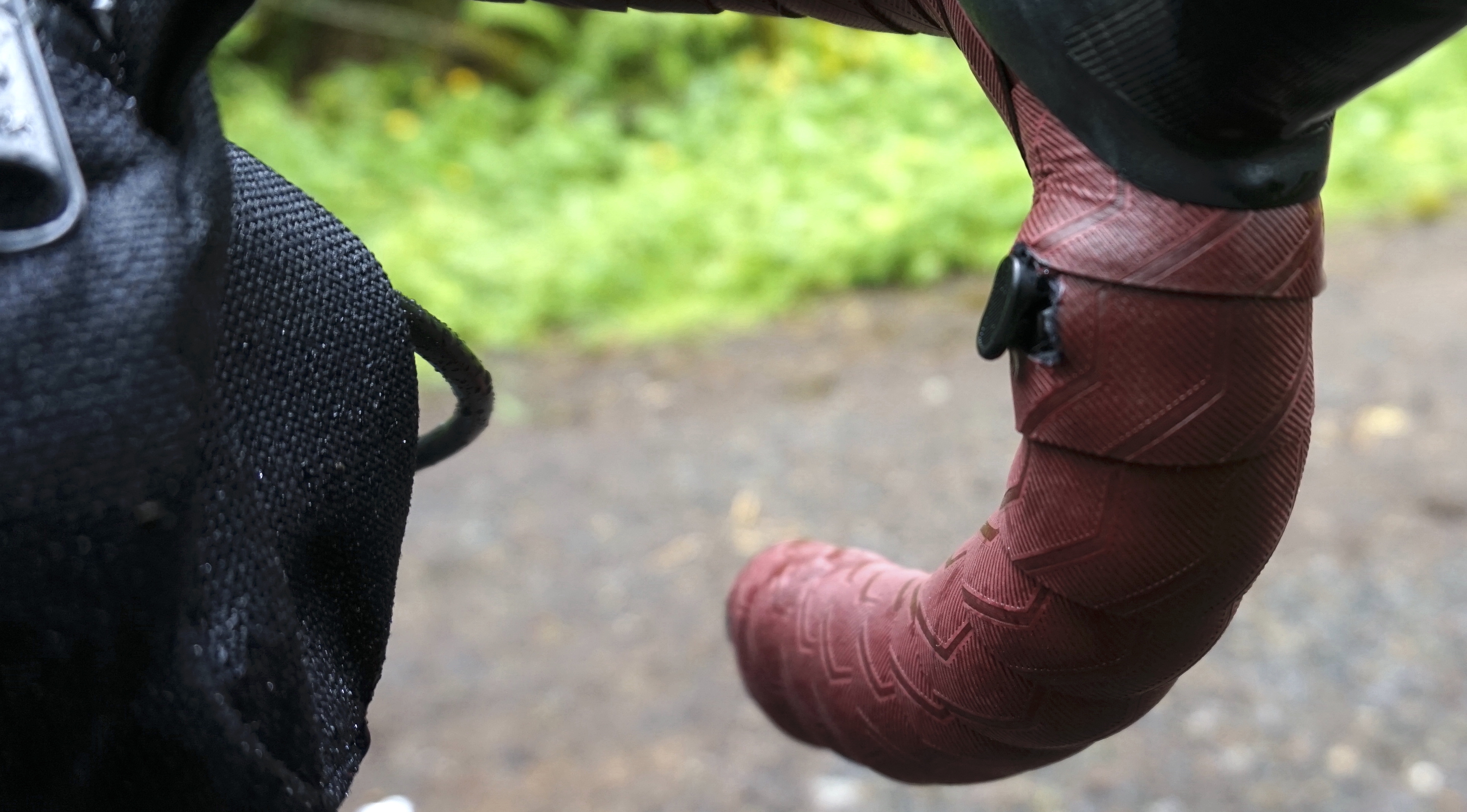
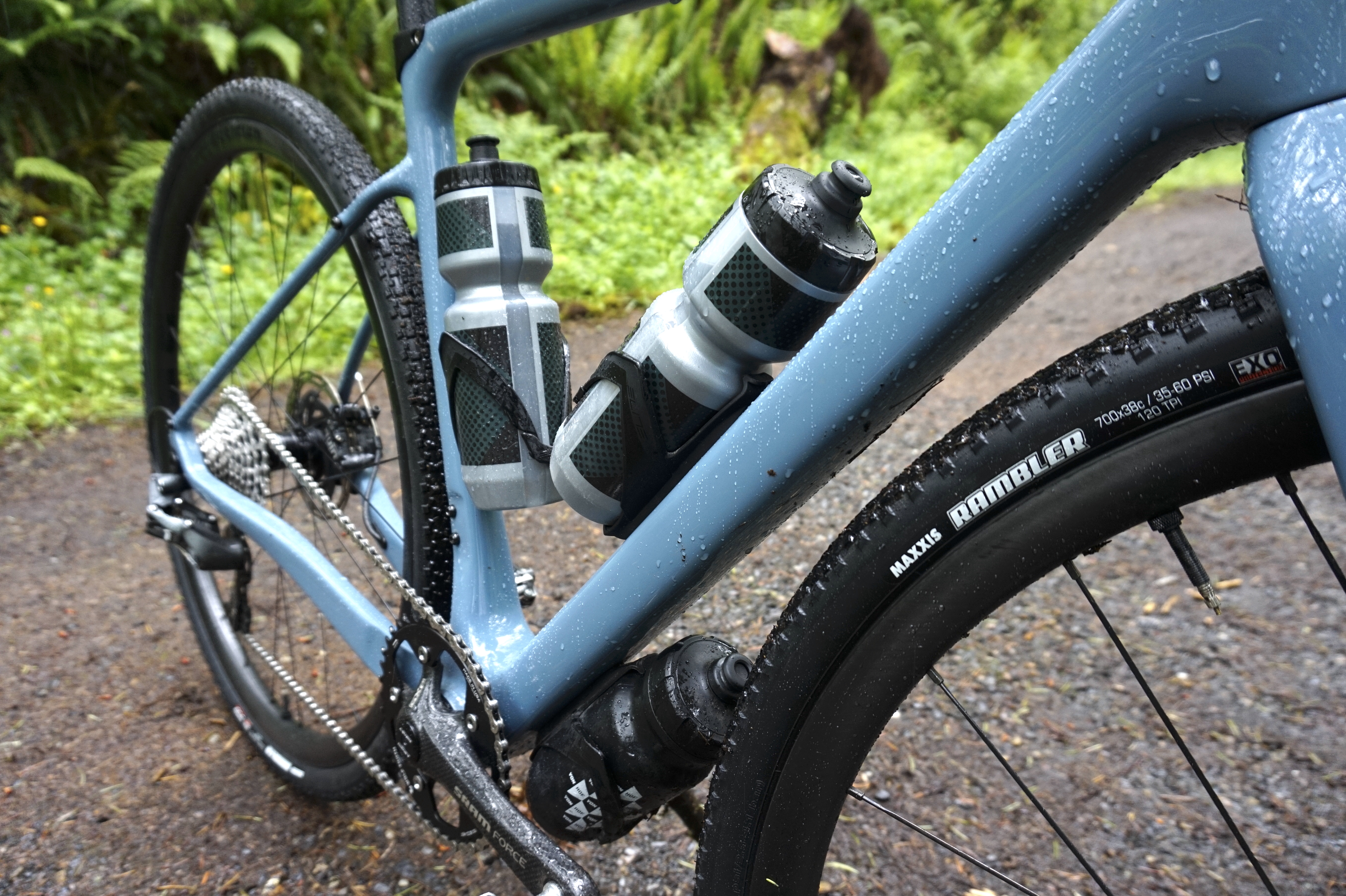
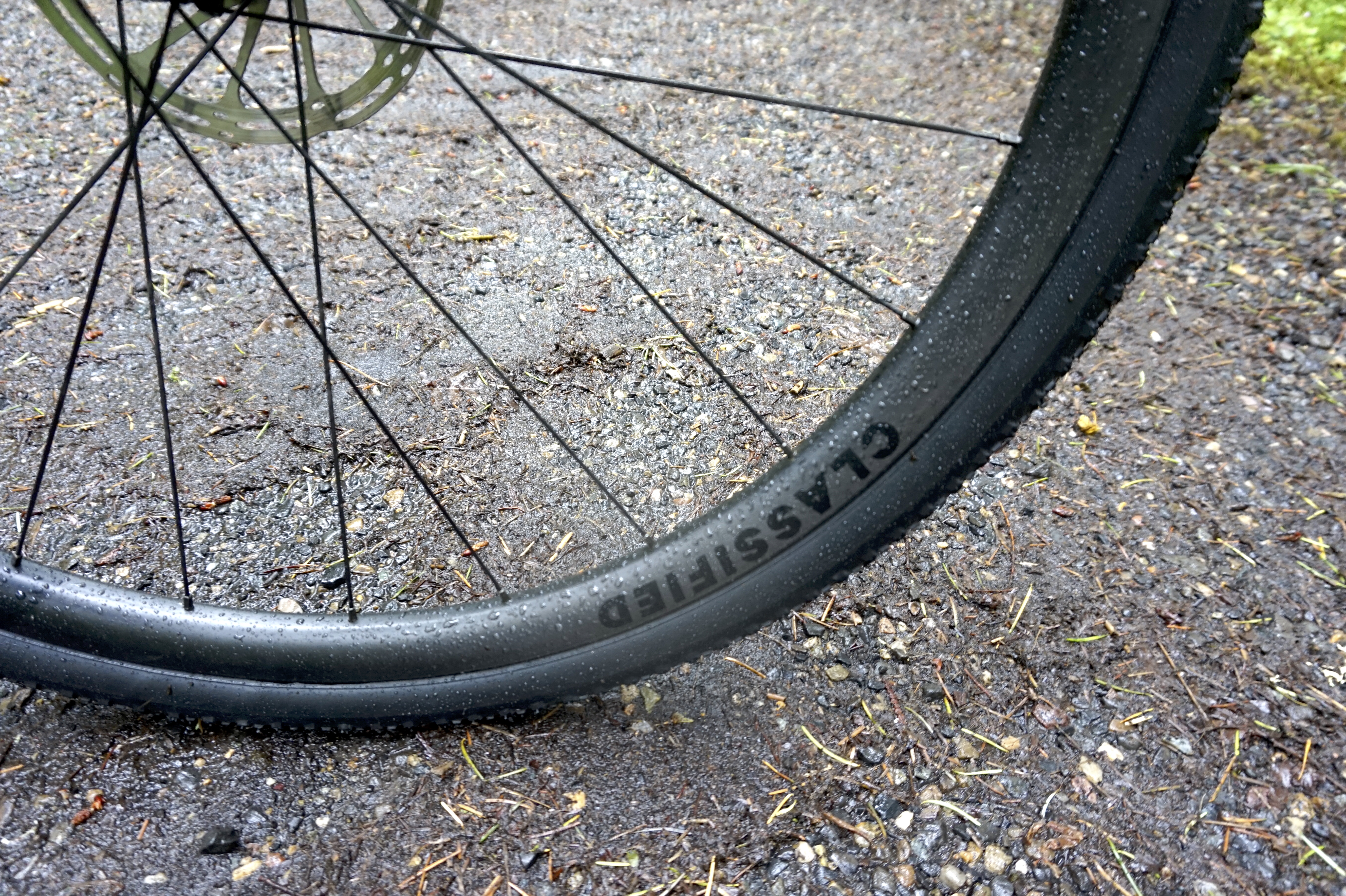
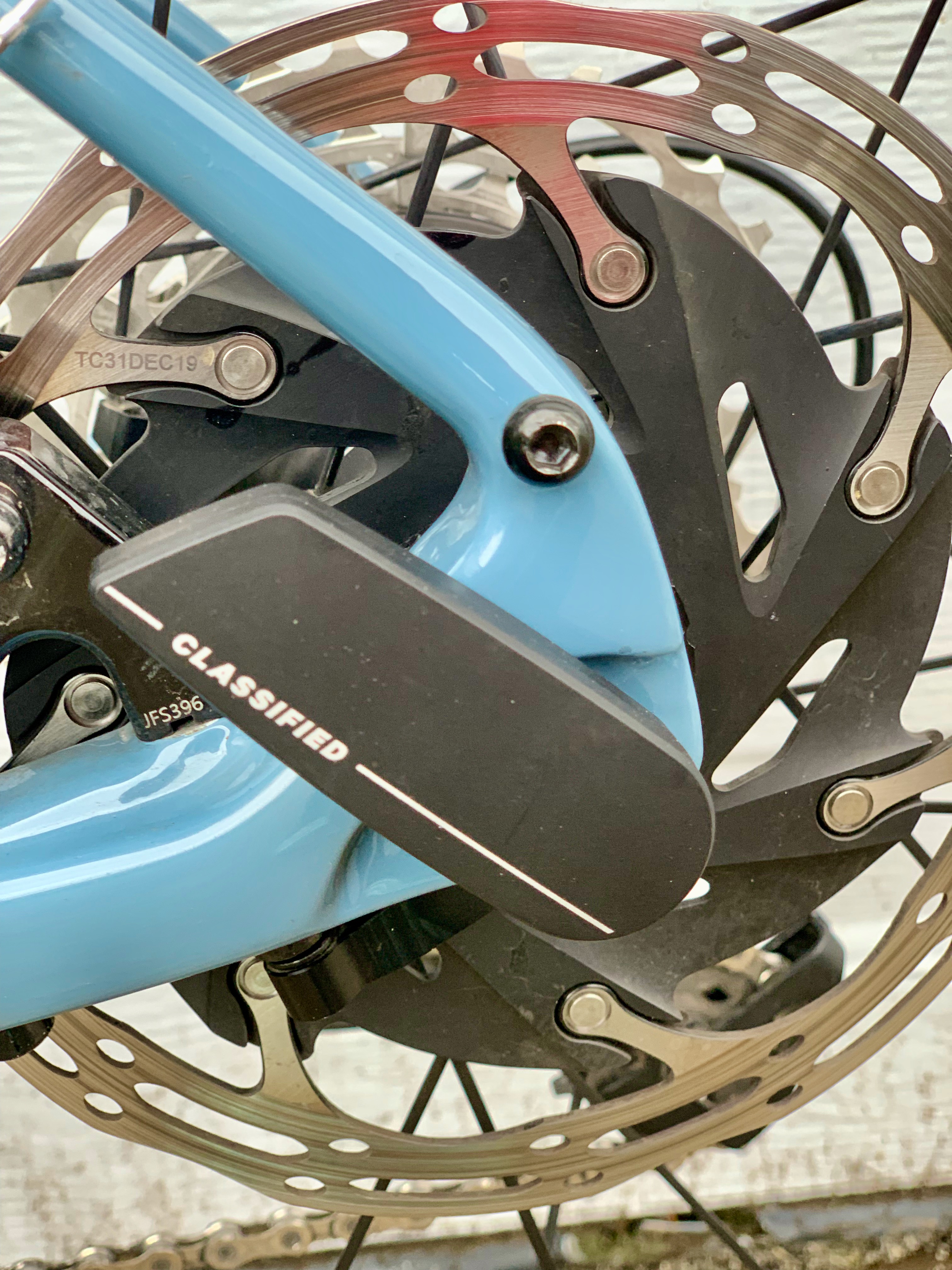
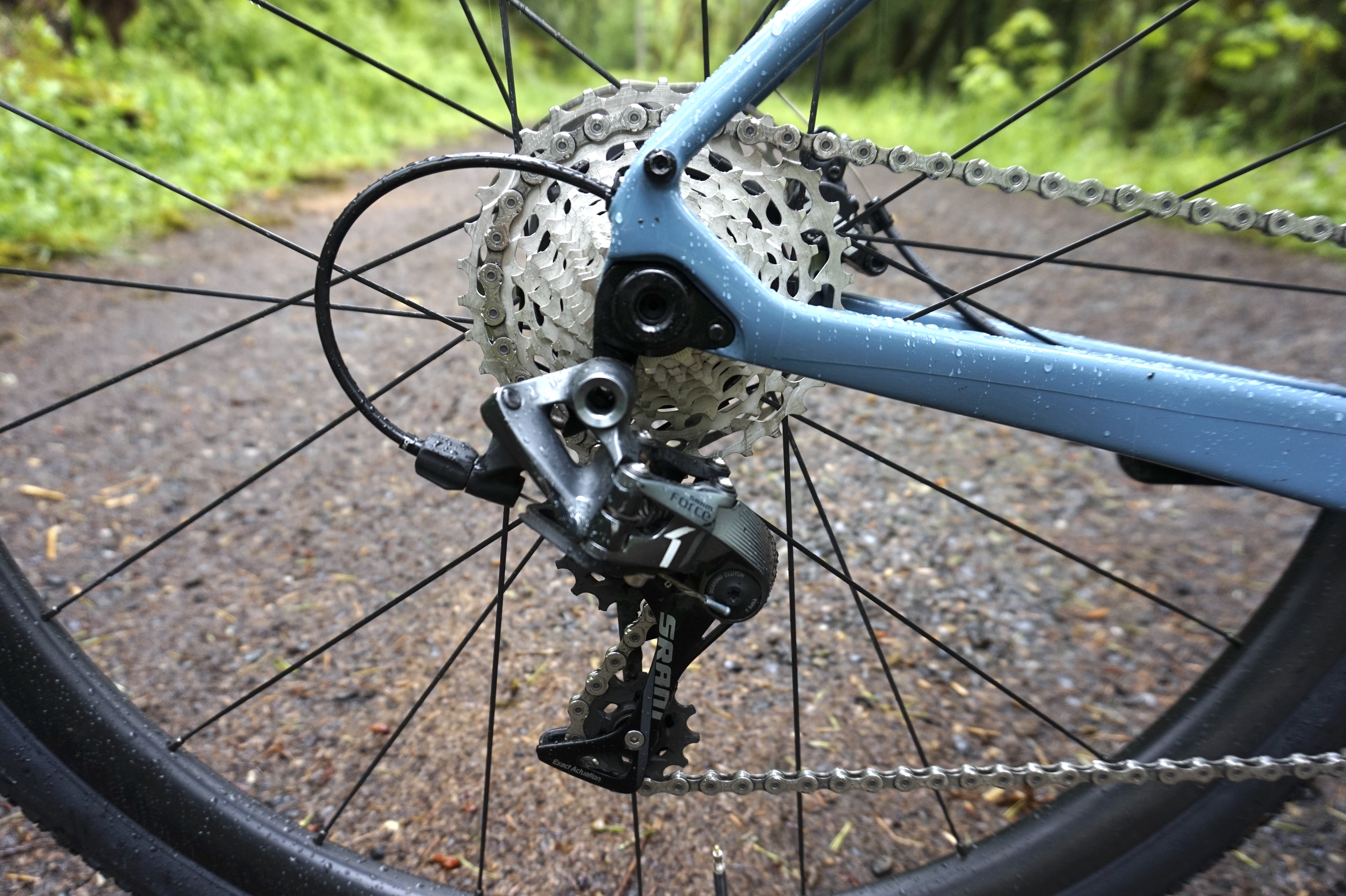
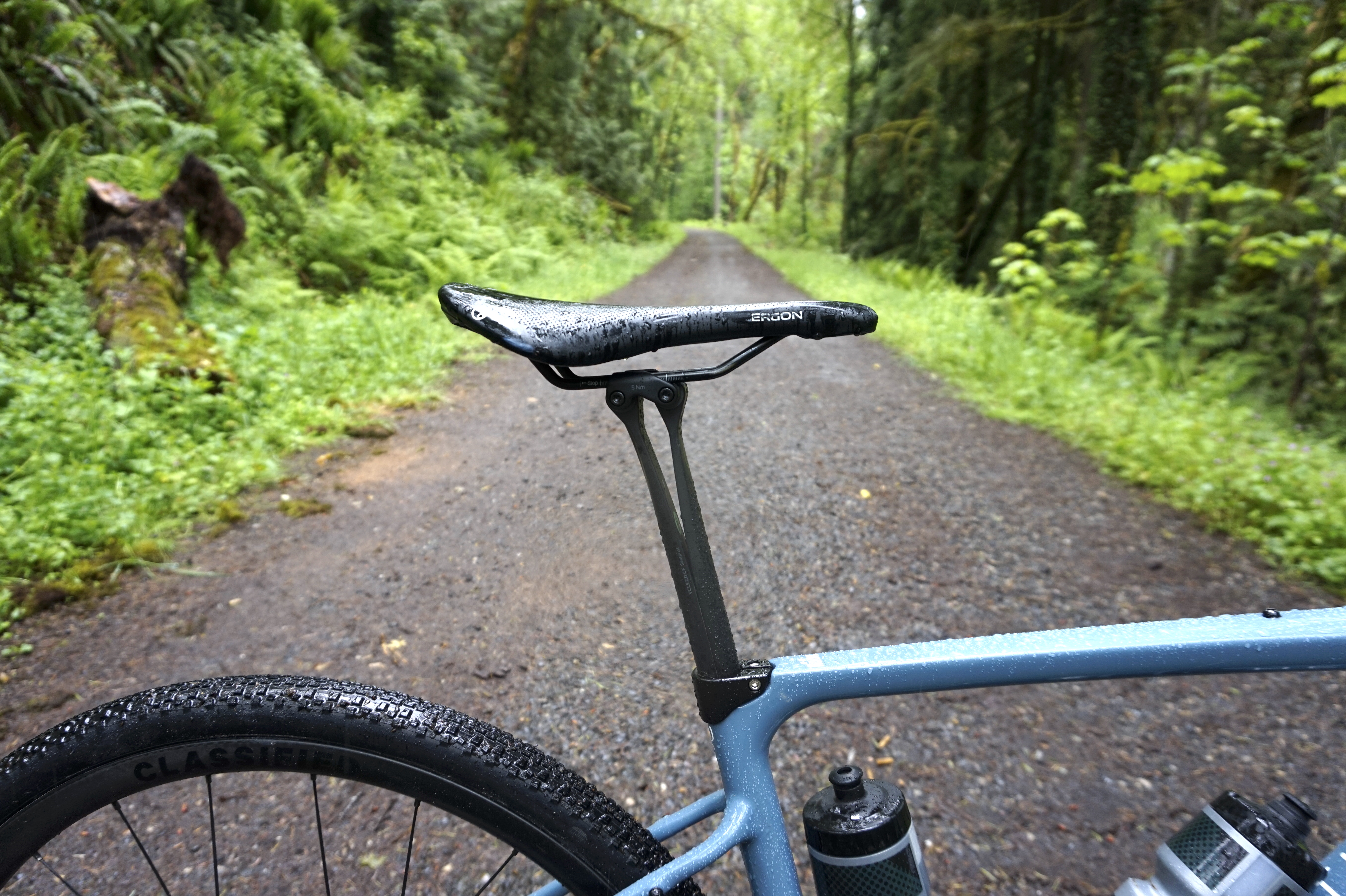
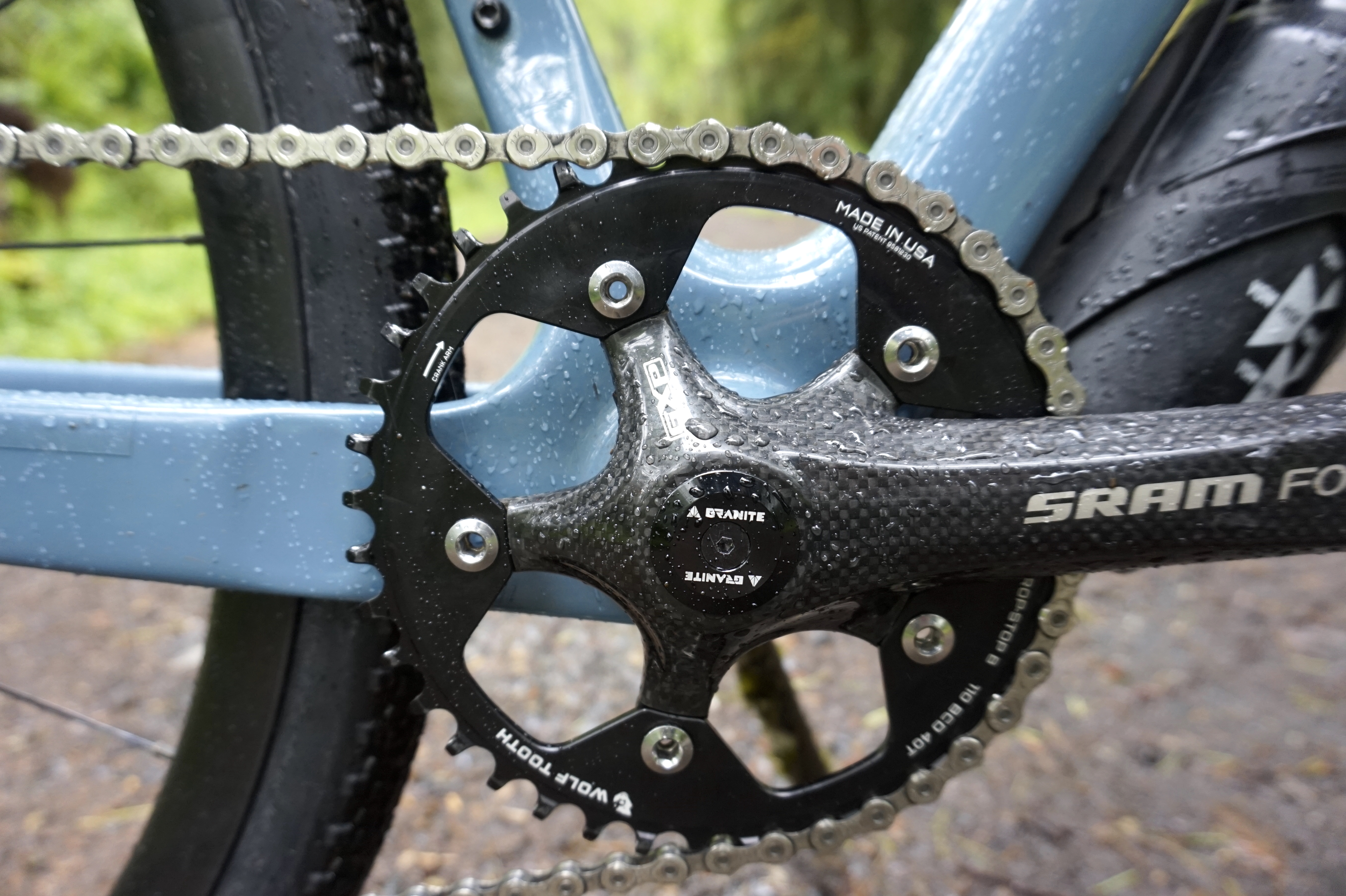
My Unbound Bike Setup (yes, it's an usual one):
Having put my bike racing days firmly behind me, I don't actually have a purebred gravel race bike - such as those Unbound race bikes chosen by riders looking to be competitive - in my stable. I instead rode my slightly altered bikepacking rig, which is highly capable but perhaps unusual "function over fancy" build.
The Frame: Thesis OB1
I own a Thesis OB1, which I'm sure only few of you have heard of. It's a small direct-to-consumer U.S. brand that currently sells only the one model. It shares the Carbonda open mold carbon frame with brands like Boltcutter and Obed.
I bought the frameset during the pandemic because a) it was one of the few bikes available in my size, b) it's affordable, c) it's very versatile, and d) it has all the eyelets I could need for bikepacking.
You can run some nice 700cc carbon hoops wrapped in 28mm slicks for a capable roadie or go shreddy by adding a dropper post and some 650b wheels with 47mm knobbed tires. Personally, I went somewhere in the middle to make it a comfortable bikepacking all-rounder.
It may not be the stiffest and speediest steed out there, but it does gobble up the miles in steady comfort.
Tires: Maxxis Ramblers Specialized Pathfinder Pro
As mentioned, I was getting a wee bit nervous about the puncture potential and course conditions so I decided to swap my 38mm Maxxis Ramblers for a set of 42mm Specialized Pathfinders Pros. The Pathfinders are not exactly light, but probably the most common (and proven) tire at Unbound.
Wheels: Classified CF G30 with Powershift Hub
For Unbound, I received a Classified Powershift system and wheelset to review.
Classified Powershift offers a wireless 2-speed shifting system integrated in the rear hub — effectively replacing the need for a front chainring and turning my original 1x system into a 2x.
The rear hub is internally geared and can switch between two speeds with the push of a Bluetooth button, which I added to my handlebars. The 30 percent change in gearing acts much like a two-ring front crankset does.
Best of all, this shifting system allows you to change gears in a split second and under full load, no matter the terrain or in this case, the muddiness! No cross chaining, no shifting lag, and fewer dropped chains.
The Classified system received UCI accreditation last year, some riders have already been spotted racing the system on the WorldTour. Beyond road, the extra gear can be a real asset in gravel riding and the team at Classified was keen for me to test it out on gravel racing's biggest stage.
I paired the 11-34 Classified hub with a Wolf Tooth 40-tooth Drop Stop chainring.
Drivetrain: SRAM Force 1 x 11 Doubletap
The Classified Powershift system paired nicely with my trusty old SRAM Force 1x 11 mechanical drivetrain with a long cage derailleur. While I've been a SRAM's eTap user for a long time, I would prefer to keep my adventure bike mechanical for easy of maintenance and repair while in remote locations. And when it comes to mechanical, I believe the old SRAM 11-speed Doubletap is among the best.
Normally speaking, I'll run a 11-42 cassette with a 38 narrow-wide chainring.
Brakes: Juin Tech R1 cable-actuated Hydraulic Brakes
Now I know these are a bit of a surprising if not unpopular choice since these brakes have become a common eBay/ AlliExpress item, so I feel the need to explain. This bike is my adventure and bikepacking bike, which I take to rather remote places. As such I don’t want any electronics or hydraulic brake lines just in case of failure. Durability and ease of repair are paramount when in the wilderness. For that purpose, these brakes have served me well for quite a few years now. The braking fluid is housed inside the caliper and brakes are operated with a standard brake cable. Are they as good as full-on hydraulic brakes? No. But they’re cheap, lightweight, easy to work on and better than mechanical disc brakes. I do recommend tossing the provided brake pads and using some quality brake pads instead.
Cockpit: Zipp Service Course with Ergon Gravel Tape
Zipp Service Course stem and handlebars wrapped in Ergon's gravel bar tape. This gravel-specific bar tape is 3.5 mm thick and features a block patterned surface texture. The tape is meant to absorb shock and vibrations while delivering grip and control on technically demanding terrain.
Seat and Seatpost: Ergon CF AllRoad Seatpost and SR saddle
Added comfort without a weight penalty, the CF Allroad Pro Carbon seatpost, also called the Leaf seatpost, is a dampening seatpost made for rough terrain. It's actually made up of two carbon fiber shafts joined by a bolt at the bottom and a seat clamp on top. When in a seated position, the two halves flex slightly when rolling over rough terrain. The seat clamp, called 'Flip Head', pivots between the two halves keeping the seat parallel to the surface and the ride feel free of a rocking movement.
Accessories:
- 3 Elite bottle cages. Two in the frame triangle, one on the outside of the downtube.
- Ellum burrito bag in the front, Timbuktu saddle bag.
- A Granite Design Stash tubeless plug tool hidden in my crank.
- Tubolito gravel tubes. Made of thermoplastic elastomer (TPU) instead of butyl, these tubes impress with their low weight, low rolling resistance and incredibly small pack size. Two unused tubes take up as much space as one regular rubber tube.
- Wahoo Elemnt computer
Here are some photos to set the stage of what the bike had to endure.

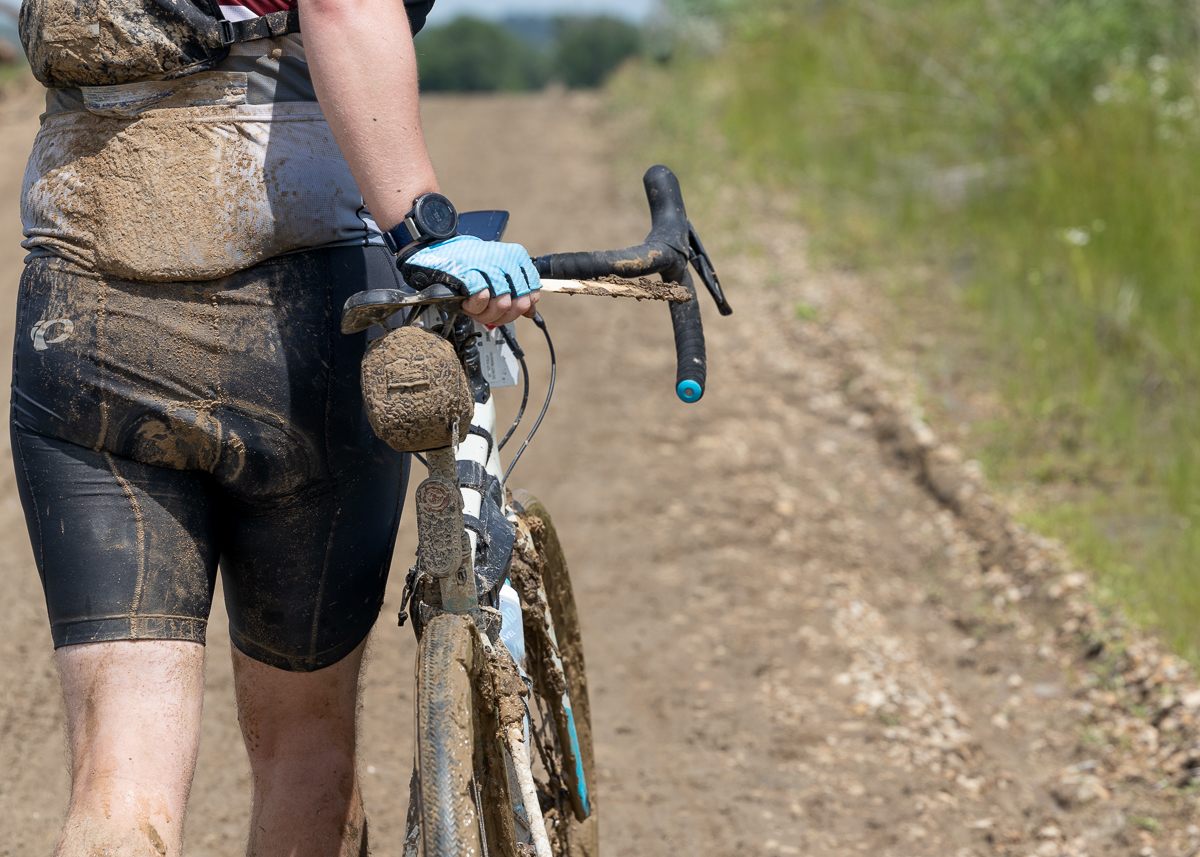
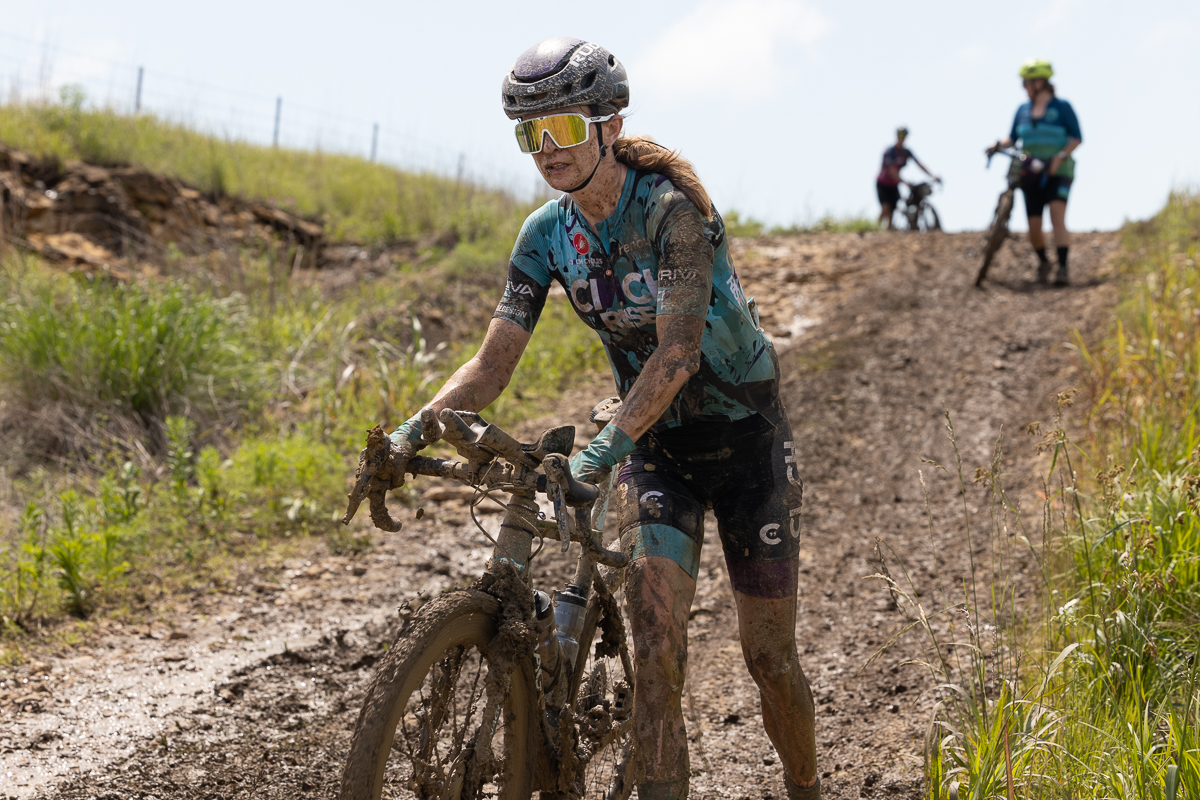
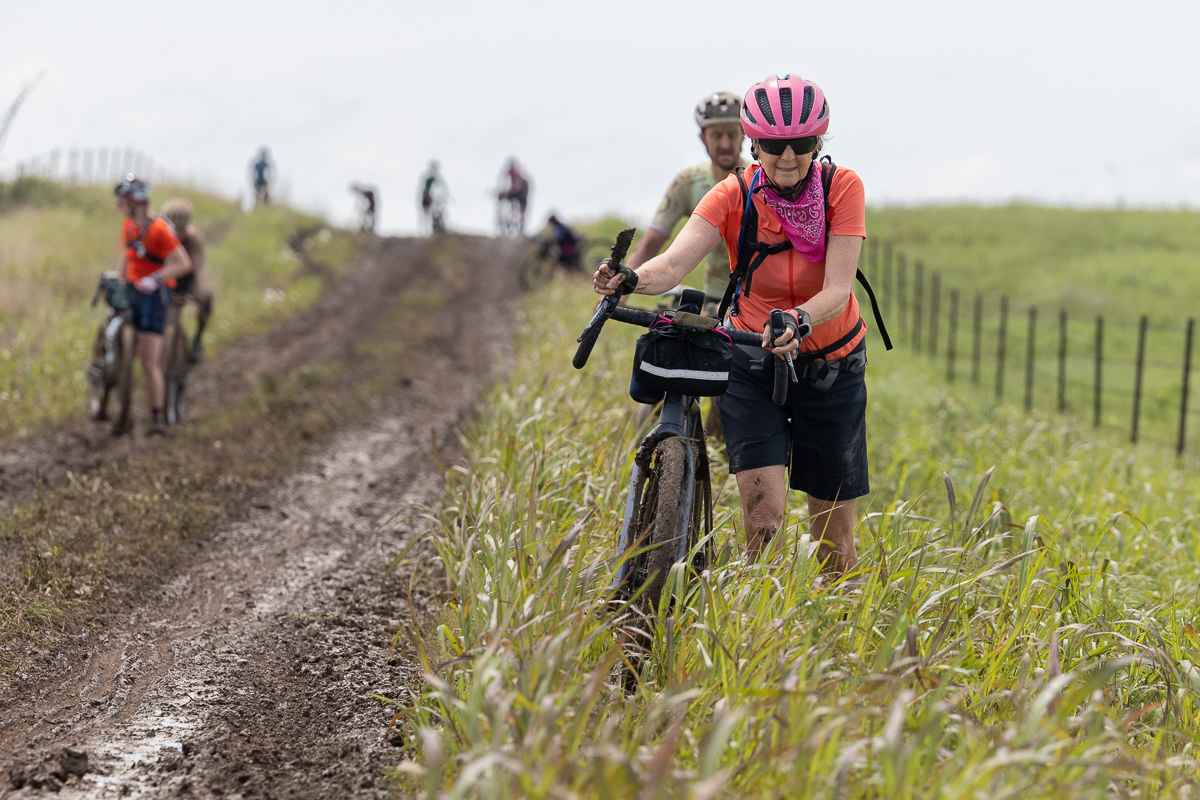
Ride Review
If you've been following the Unbound coverage, you'll know that the conditions were truly epic. Massive downpours, lightening, thunder and so much mud. Not to mention the carnage of sliced tires, lost bottles, clogged-up mechs and crashes.
It took me days to fully clear the grit from my ears and nose, and I promptly gave my bike parts an Ultrasonic bath upon my return home.
The morning had started off promising. At 7 a.m. the weather was mild and rather ideal for racing. It was overcast, mostly dry and warm. And since the course had had a couple days to dry out, conditions were really fast. I completed the first 40 miles in under two hours, which doesn't happen often in gravel riding.
I didn't dare jinx myself but as I passed one rider in the ditch after another, I was rather pleased and impressed with my tire choice. They aren't light but the Specialized Pathfinder Pros rolled quickly, maintained grip and kept me puncture-free. While many were forced to dismount and walk up the loose and sandy climb known as 'The Judge', I was able to keep traction and spin my way up just fine.
The course featured quite a few deep creek crossings, flood zones and large puddles that caused my drivetrain to start squeaking and I wished I had brought along some chain lube. Between the upgrade to a 42mm tire and the mud, I could no longer carry my third bottle, and with the speed at which we were rolling at first, I should have swapped my front chainring for a larger one. I had received the Classified system just days before the event and hasn't had enough time to test it out with Unbound being the real gear test. As a result, the 40T chainring saw me a little under-geared. Other than that, I was happy with my bike.
But dark clouds were looming and soon enough, the winds picked up, the rain drops increased and when the cloud finally did burst open with a boom of thunder in the distance, they released a deluge the kind I've rarely experienced.
We were drenched to the bone in no time, and drafting behind another rider became highly unpleasant. Even with large sunglasses for protection, I didn't care much for getting coated in mud and tasting the grit in my mouth.
The downpour persisted for a good two hours and my bike was starting to struggle. Creaking noises were coming from who knows where and the drivetrain was struggling as well. As my rear derailleur clunked from one gear to the next, it effected the Classified shifting as well.
With the Classified Powershift hub being fully sealed, it was nice to know that no matter how muddy conditions were going to get, I would always have that internal bail-out gear. But as my rear derailleur was getting clogged up, the Classified shifting lost its smoothness, making the jump between the big and little gear feel rough.
This, however, seemed to have been caused by the struggling rear derailleur because once the bike was cleaned, the Classified Powershift system shifted as smoothly and crisply as ever.
While you can definitely feel the undulating terrain at Unbound after some time, I don't think I necessarily 'needed' the added gear granted by the Powershift hub. I think my usual 1x setup with a 38T chainring and a 11-42 cassette would have been plenty. If the course had been hillier, perhaps I would have felt differently.
Finally, I quite liked the Ergon gravel bar tape. It's firm rather than squishy and despite the wetness, held its grip. And after two flights and several rides including the race, the tape still looks new.
Everything survived the epic conditions except for my brake pads (they were completely won at the end of the ride) and sadly, my Wahoo computer. It's still functional, but water and dirt have penetrated the screen on edges.
After taking my time to chat and take photos in the middle of the course, I still finished the ride in around 6.5 hours with plenty of time to wash up and eat some food before interviewing the mud-covered pros.
What I Wish I'd Done Differently
- Install brand new brake pads ahead of the ride.
- Leave off the third water bottle cage. (It ended up being just a mud catcher.)
- Bring chain lube.
- Use waterproof bags.
- It's a tough call, but I'd either forgo the Classified Powershift system for this specific event or pair it with a bigger chainring. I didn't need the gearing and it's just two less batteries to think about. Even with the carbon wheels, it's slightly heavier than my usual setup.
A full review of the Classified Powershift system is forth-coming, and if you have any comments or questions about my setup, feel free to reach out via email or on social media.

Thank you for reading 20 articles this month* Join now for unlimited access
Enjoy your first month for just £1 / $1 / €1
*Read 5 free articles per month without a subscription

Join now for unlimited access
Try first month for just £1 / $1 / €1

Cycling Weekly's North American Editor, Anne-Marije Rook is old school. She holds a degree in journalism and started out as a newspaper reporter — in print! She can even be seen bringing a pen and notepad to the press conference.
Originally from the Netherlands, she grew up a bike commuter and didn't find bike racing until her early twenties when living in Seattle, Washington. Strengthened by the many miles spent darting around Seattle's hilly streets on a steel single speed, Rook's progression in the sport was a quick one. As she competed at the elite level, her journalism career followed, and soon, she became a full-time cycling journalist. She's now been a journalist for two decades, including 12 years in cycling.
-
 A bike rack with an app? Wahoo’s latest, and a hub silencer – Sea Otter Classic tech highlights, Part 2
A bike rack with an app? Wahoo’s latest, and a hub silencer – Sea Otter Classic tech highlights, Part 2A few standout pieces of gear from North America's biggest bike gathering
By Anne-Marije Rook
-
 Cycling's riders need more protection from mindless 'fans' at races to avoid another Mathieu van der Poel Paris-Roubaix bottle incident
Cycling's riders need more protection from mindless 'fans' at races to avoid another Mathieu van der Poel Paris-Roubaix bottle incidentCycling's authorities must do everything within their power to prevent spectators from assaulting riders
By Tom Thewlis
-
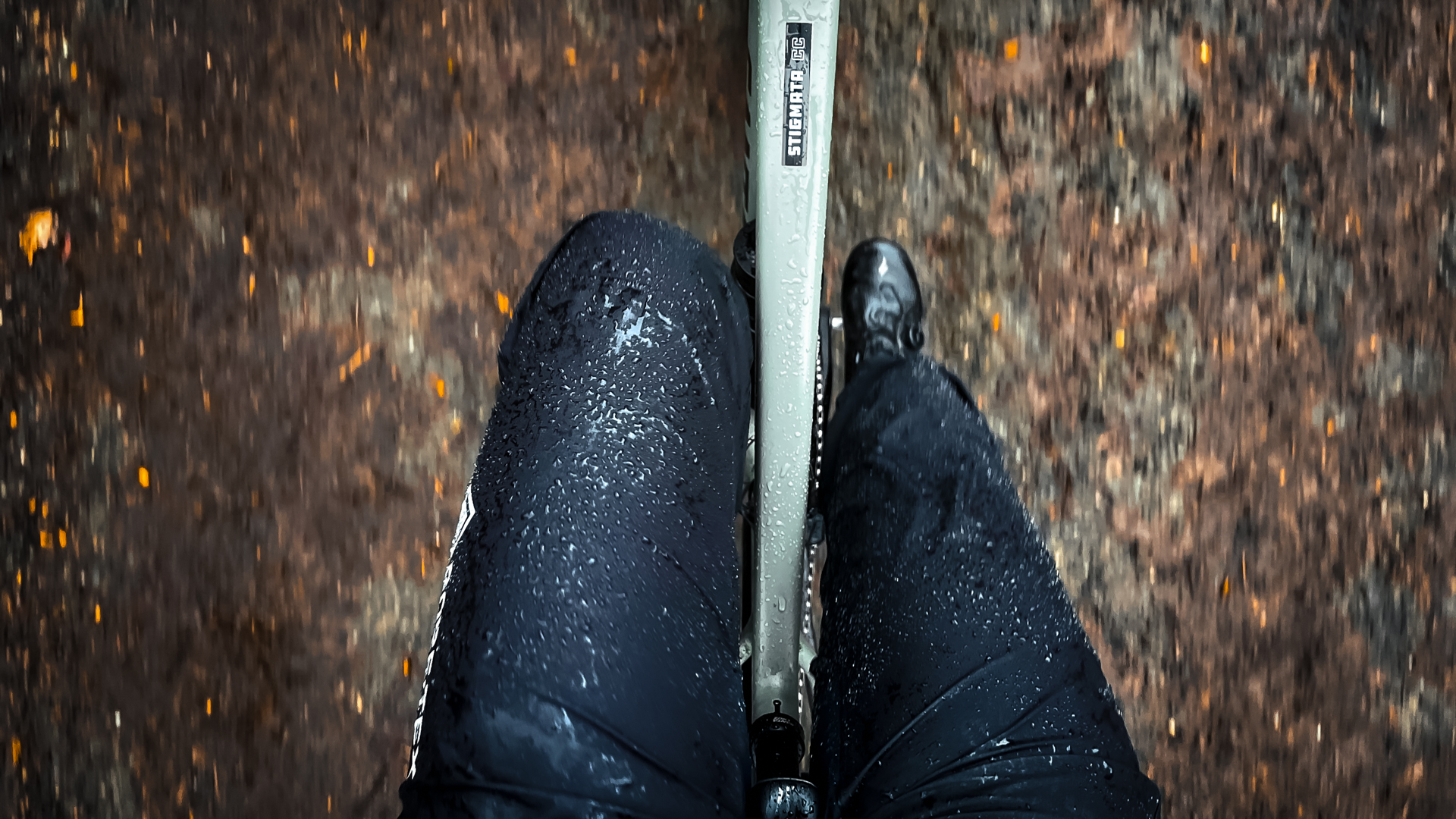 These Gorewear Endure GORE-TEX Pants are the best rain pants I’ve found for surviving a winter of riding in the Pacific NorthWET
These Gorewear Endure GORE-TEX Pants are the best rain pants I’ve found for surviving a winter of riding in the Pacific NorthWETBecause sometimes, lycra—insulated or not—just isn’t enough
By Anne-Marije Rook
-
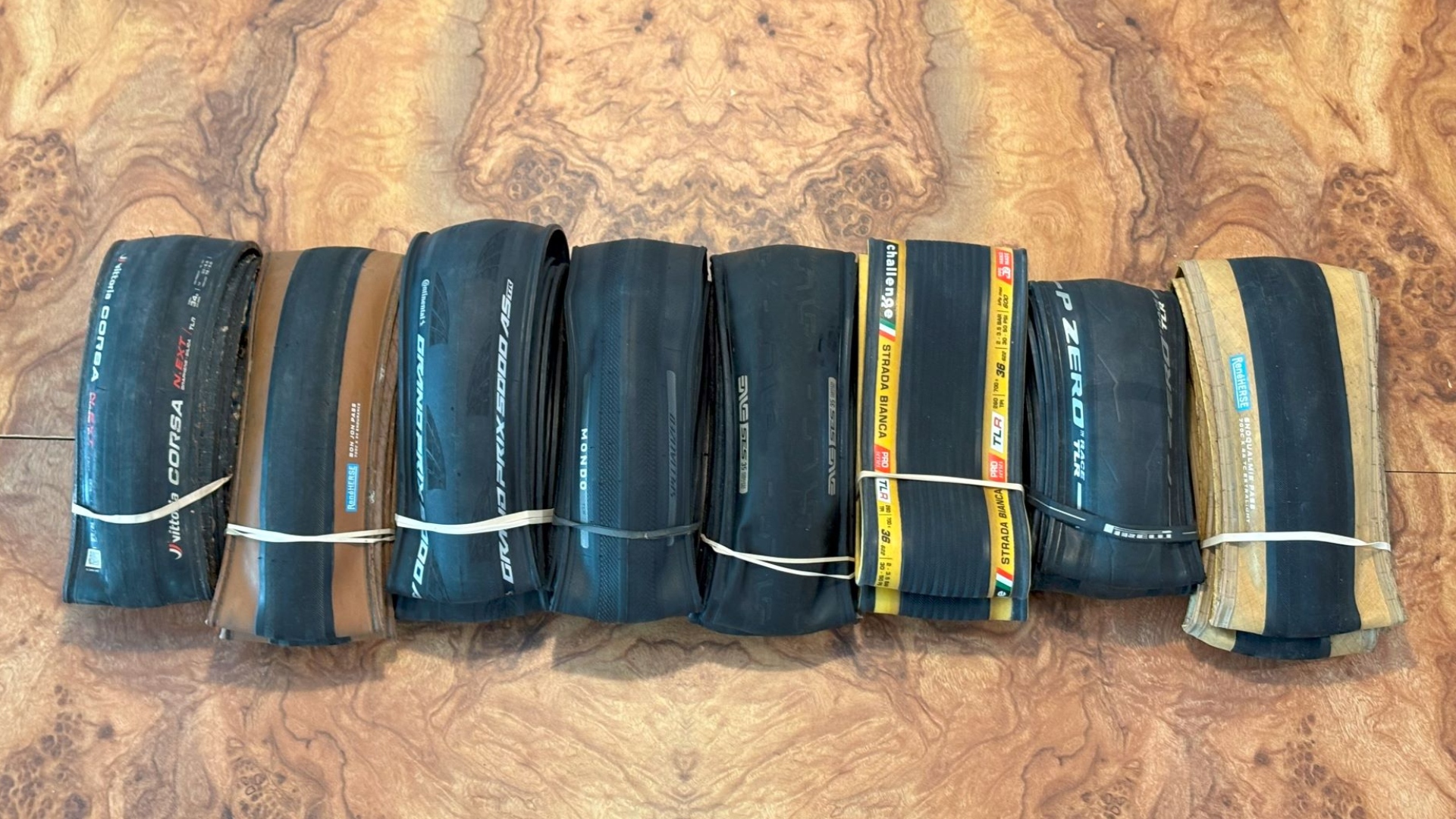 Forget 28mm tyres: The rise of wider road bike tyres is here, and if you ride your gravel or all-road bike on the road, pay attention
Forget 28mm tyres: The rise of wider road bike tyres is here, and if you ride your gravel or all-road bike on the road, pay attentionAs bikes get more capable, there is a compelling case that road riding is better with wider rubber
By Logan Jones-Wilkins
-
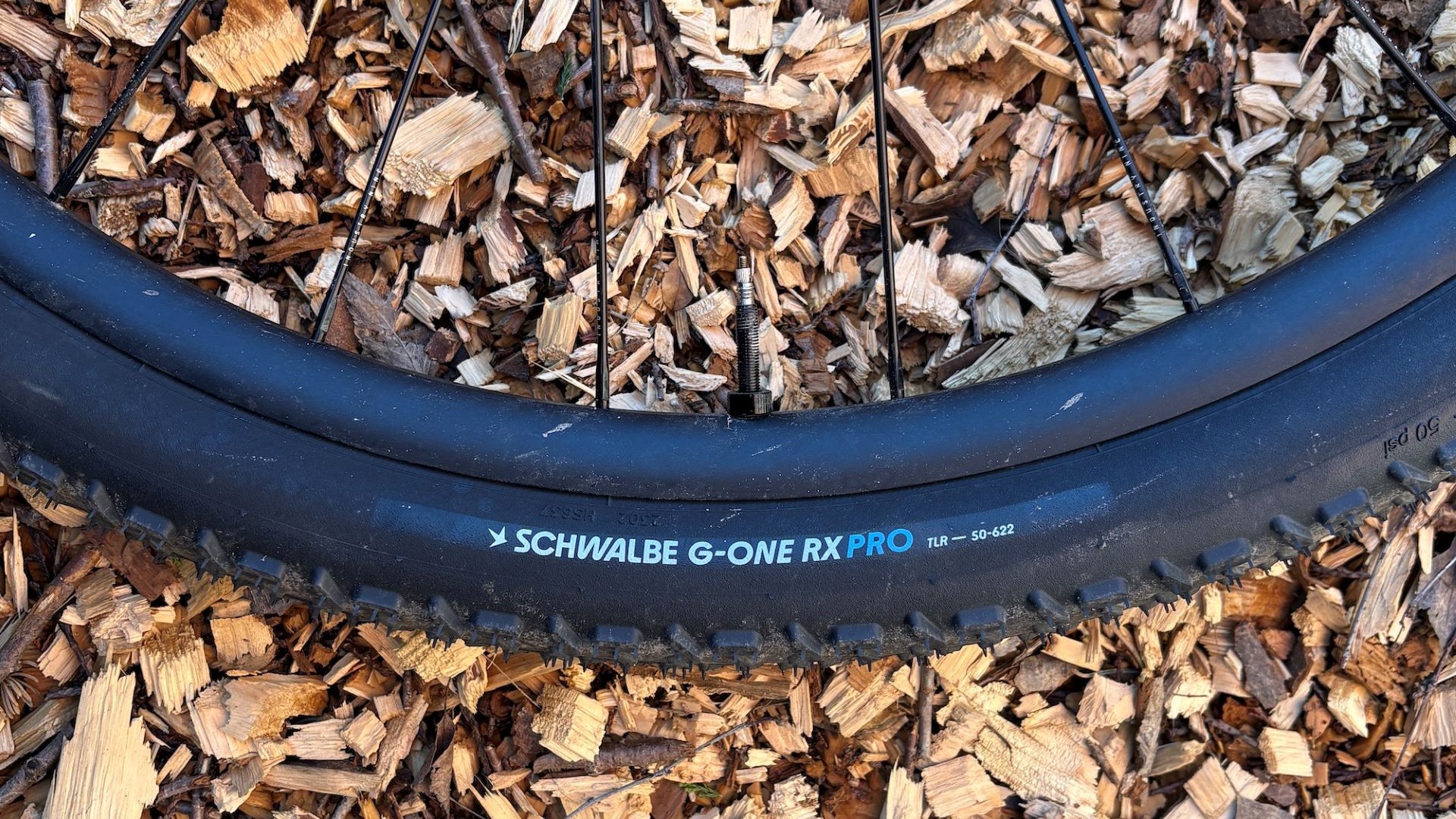 Size matters — but so does the casing: a Schwalbe G-One RX Pro gravel tyre review
Size matters — but so does the casing: a Schwalbe G-One RX Pro gravel tyre reviewA modern gravel tyre for rough conditions, available in a variety of widths, that performs flawlessly
By Tyler Boucher
-
 Shimano 12-speed GRX Di2 long-term review: 2x shifting for off-road riding isn’t dead after all
Shimano 12-speed GRX Di2 long-term review: 2x shifting for off-road riding isn’t dead after allThanks to Shimano’s latest Di2 groupset, I’ve come to appreciate the benefits of 2x shifting all over again—even if Shimano plays it a bit too safe
By Anne-Marije Rook
-
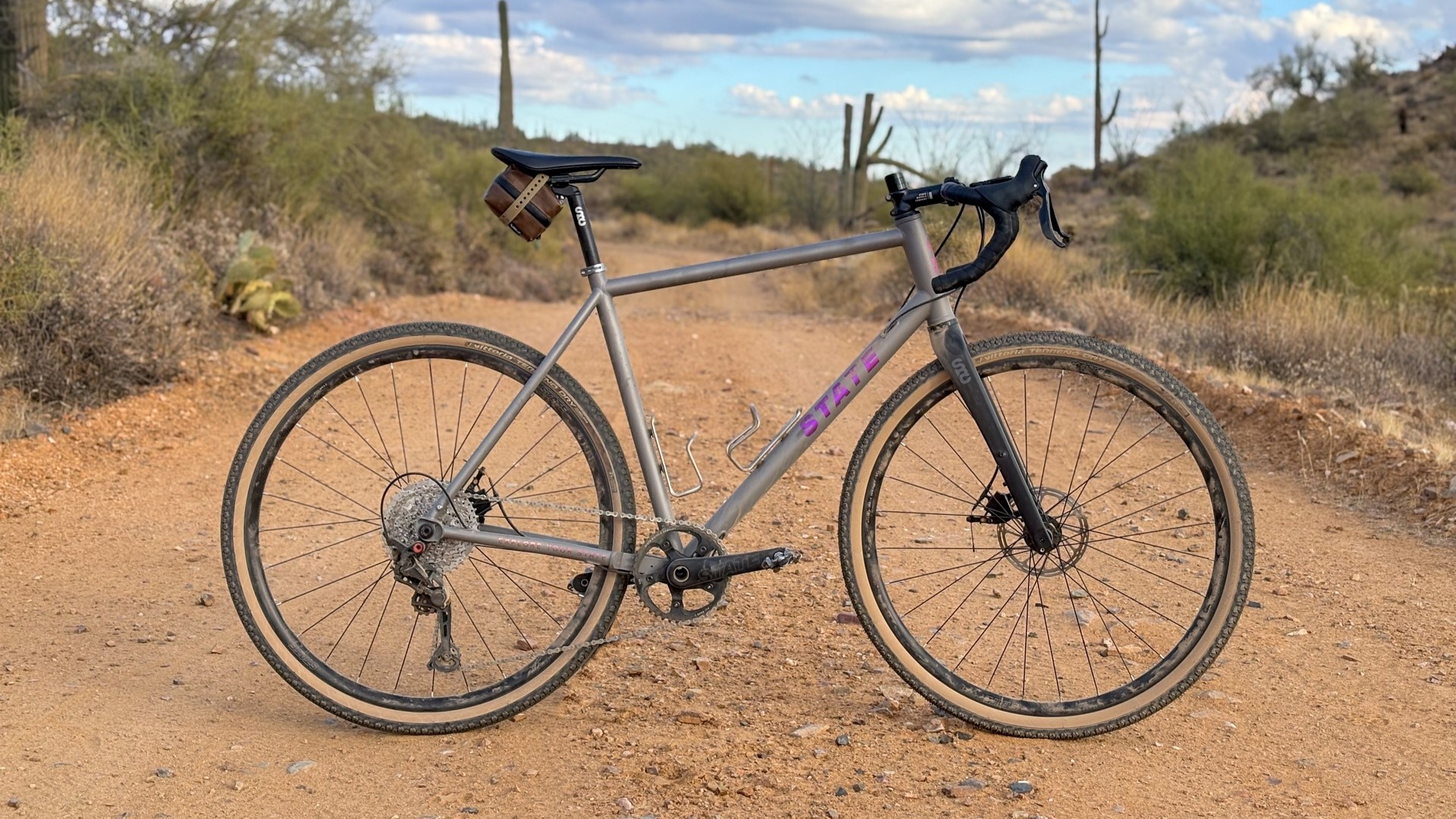 The State Titanium All-Road is an admirable but flawed attempt to build a titanium gravel bike for the masses
The State Titanium All-Road is an admirable but flawed attempt to build a titanium gravel bike for the massesA titanium frame at budget pricing is a great step, but does a premium frame material matter if the bike's componentry holds it back?
By Logan Jones-Wilkins
-
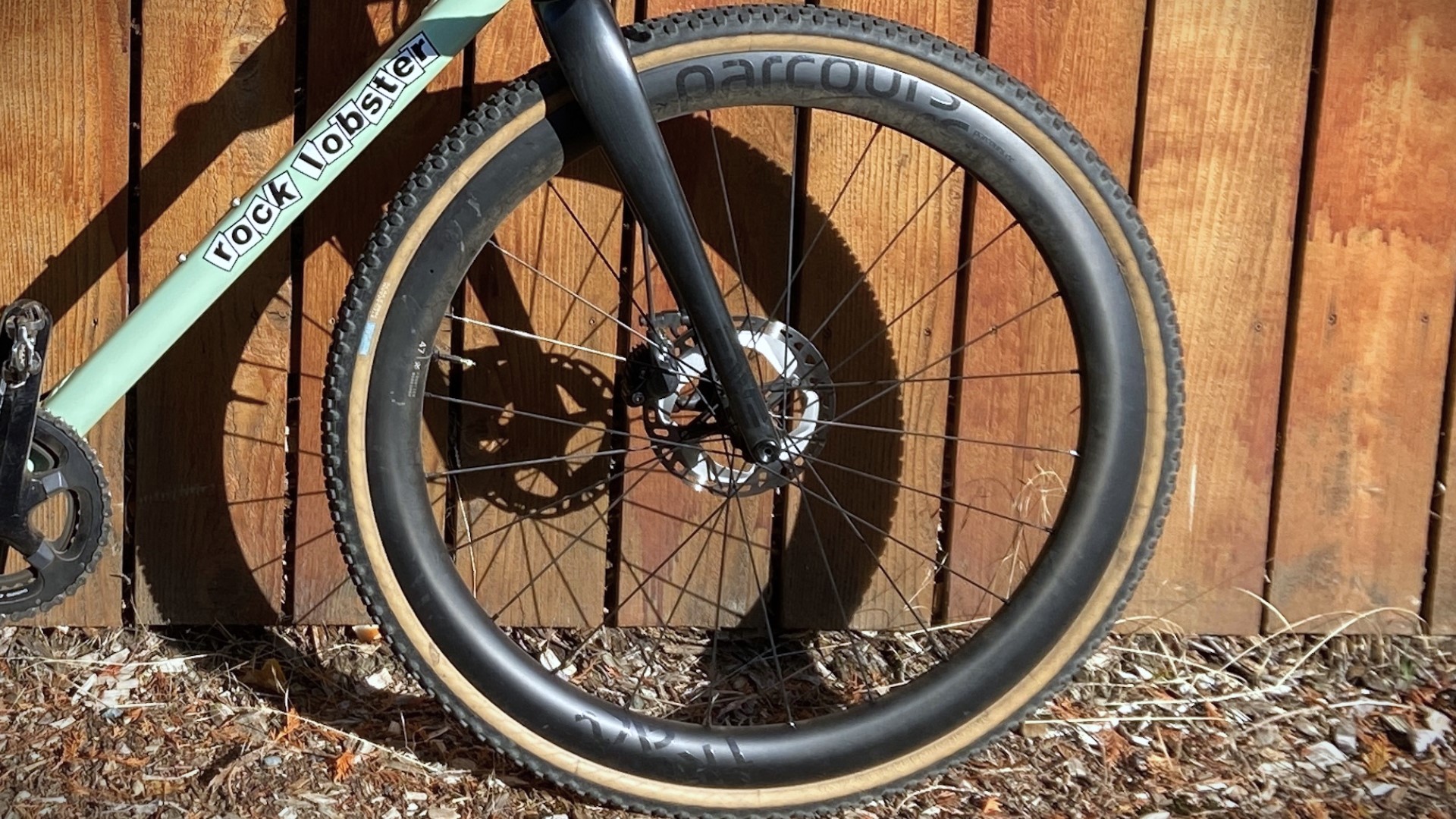 Parcours FKT Wheelset Reviewed: Affordable, meet wide
Parcours FKT Wheelset Reviewed: Affordable, meet wideParcours, whose stated mission is making aerodynamics more accessible, set out to make a faster gravel wheel. The superwide FKT is the result
By Tyler Boucher
-
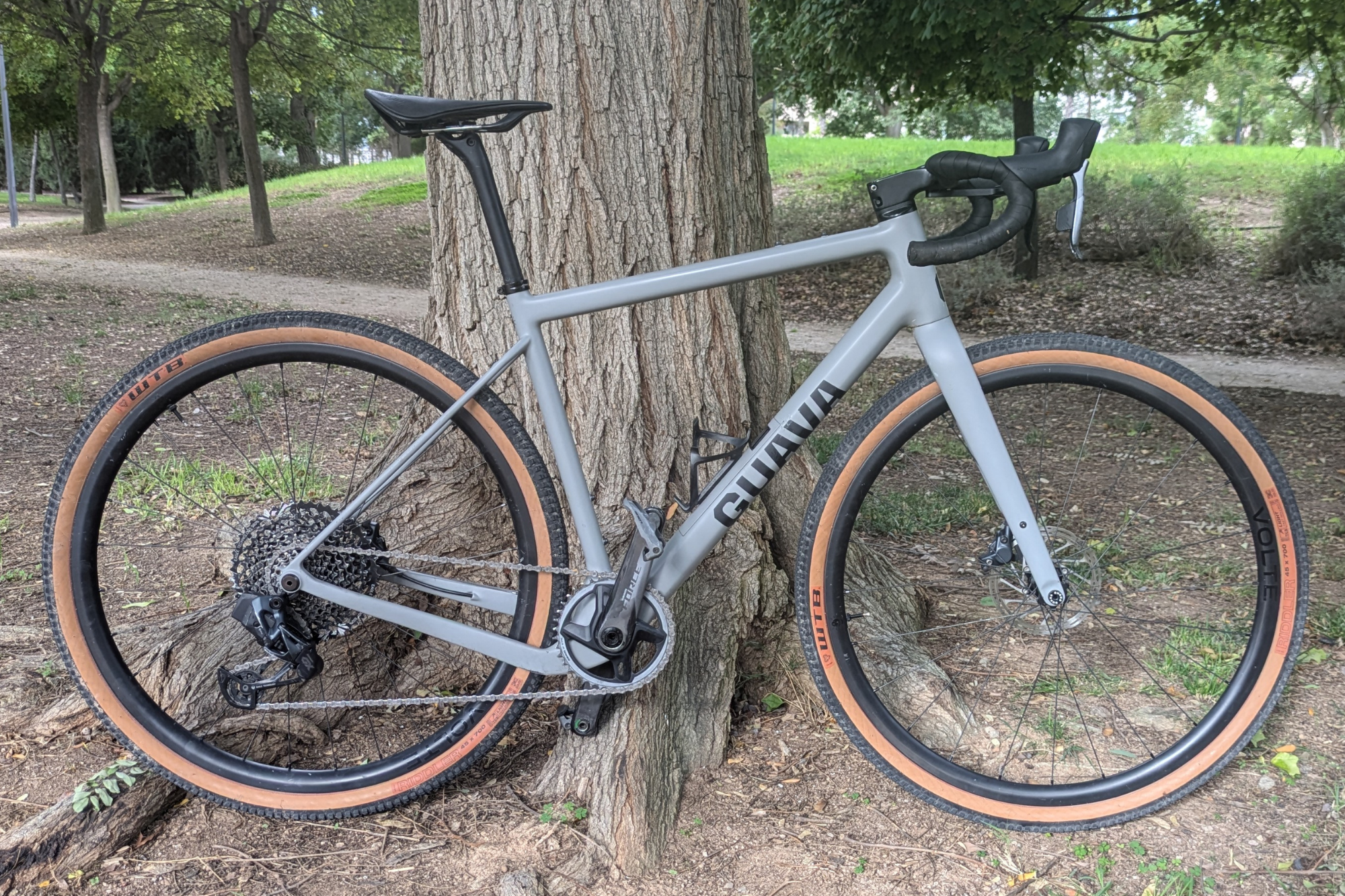 Guava Spot Force AXS review: the Catalan gravel bike that loves tarmac too
Guava Spot Force AXS review: the Catalan gravel bike that loves tarmac tooIt just doesn’t deal with fast asphalt, rocky terrain, sandy stretches and damp conditions, but it excels across them. It’s fast, aggressive, nimble, stable, and above all compliant.
By Chris Marshall-Bell
-
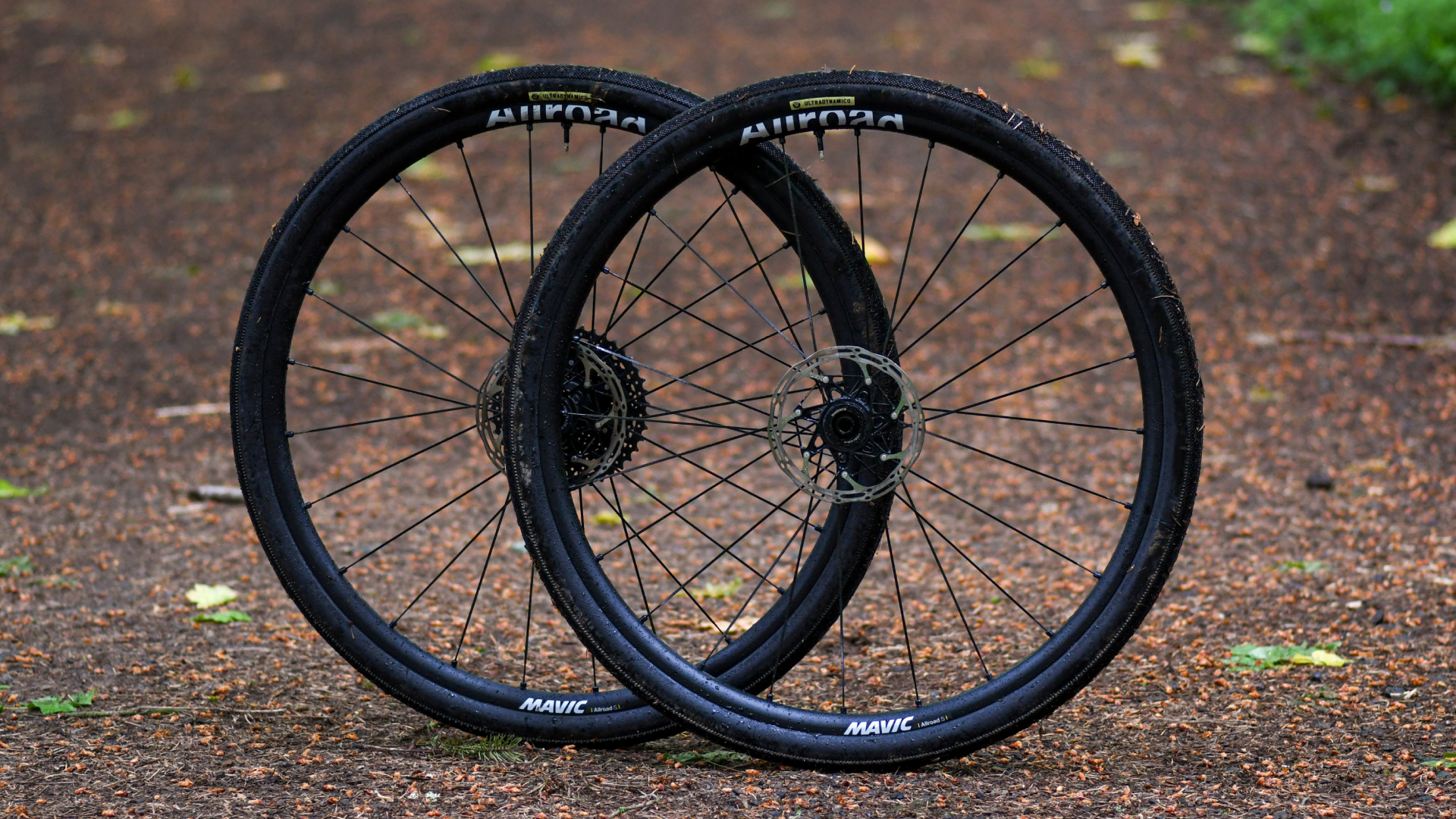 Mavic's latest foray into gravel impresses: the AllRoad S wheelset is stiff, tapeless and robust
Mavic's latest foray into gravel impresses: the AllRoad S wheelset is stiff, tapeless and robustWe review Mavic's new AllRoad S aluminium wheelset
By Charlie Kohlmeier